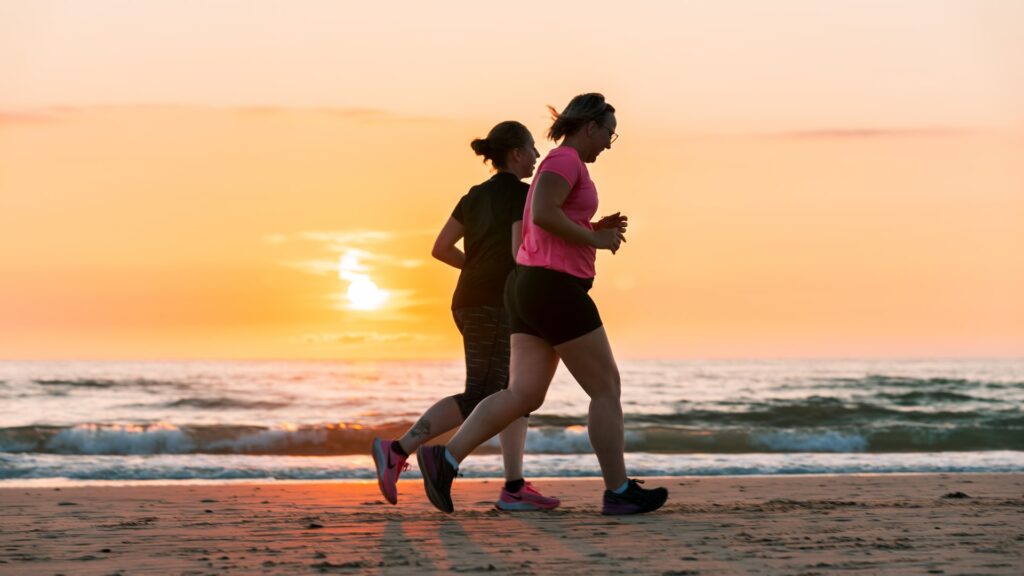By Dr. Tamara Kung, ND
A couple of years ago I watched a Ted Talk given by Dr. Stephen Seiler, a professor in Sport Science at the University of Agder in Norway. He described a surprisingly contradicting phenomenon he noticed in top-performing endurance athletes that went against the frequently quoted and deeply embedded “No pain, no gain” mentality so prolific in our society.
So many of us grow up learning that to improve, we have to push ourselves through pain and sacrifice. Cue all the brutal montages in the movies of super-intense training with scrunched-up faces gasping for air and bodies dripping with sweat, and the illusion they are training this way every single day.
What piqued Dr. Seiler’s interest was when he was out for a run one day and saw one of the top athletes he had previously studied in his lab, approach a hill while on her run. He knew she was capable of high levels of performance, so was taken aback when she stopped running and began walking up the hill. To him, if there was a hill, he’d push himself to run up there as fast as he could, so why was this talented athlete not running when she could clearly do so?
What he discovered was that most of the elite athletes stay in their green zone most of the time.
- The green zone is defined as the level of activity where you can hold an easy conversation and feel only a mild level of exertion.
- Yellow zones are when you can respond in a few word phrases and feel a moderate level of exertion.
- Red zones are where you are gasping for air and feel extremely pushed to your exertional limits (what we see in the movies).
An example was taken from the all-time winter olympian Marit Bjørgen who let researchers gather data from all her training years. During her peak years of training, Marit’s year would be in the green zone for about 800 hours and less than 100 hours in her yellow and red zones.
Furthermore, the best marathon runner in history, Eliud Kipchoge, takes the same approach. “I perform 80 percent on Tuesday, Thursday, and Saturday and then at 50 percent Monday, Wednesday, Friday, and Sunday”. Lots of green zone in his training.
Spending most of their practice in the green zones allows the most successful athletes to build a strong foundation for those moments of yellow and red zone intensities. It’s a place where they can practice comfortably, enjoy it, and recover, day in and day out. And that’s where the success comes from.
Practice needs to be sustainable, that’s where our bodies and minds rewire and create new adaptations and improve our performance.
Daily moderately high intensity can lead to burnout and stagnation, and unfortunately, this is what happens to a lot of people when they get excited about hitting a new workout regime hard. They believe they will see more benefits if they go all out every day and get frustrated when they can’t sustain this. It’s because it’s not sustainable, and this idea of No pain, no gain is not realistic.
Now, let’s apply this theme to other skills as well.
Nutrition
- Green zone examples:
- Replacing one processed snack with berries / your favourite fruits and nuts instead.
- Having a hearty, colourful salad for lunch 1 day per week
- Incorporating one new fruit, vegetable, bean, or any plant food per month
- Yellow zone examples:
- Having a cup of berries on alternating days for your snacks
- Having a colourful salad on alternate days for lunches
- Avoiding eating after dinner on weekdays
- Red zone examples:
- Avoiding added sugars and processed foods
- Having colourful meals that contain all 7 colours daily
- Enjoying at least 40 different foods a week
Sleep
- Green zone examples:
- Putting blue-light-blocking glasses on as dusk approaches to protect your melatonin
- Turn on a salt lamp or light candles in the evenings
- Silencing device notifications 2 hours before bedtime
- Yellow zone examples:
- Take your phone/ any device out of the bedroom when you sleep
- Avoid sitting on the couch watching tv at night, and discovering alternate activities to do instead.
- Red zone examples:
- In bed at a time where you achieve 8 hours of sleep
- There are no devices or screen use at least 2 hours before bed
As you can see, we can apply this green zone style of training to the lifestyle habits that we want to practice supporting sustainable health. Your green zone practices should be relaxing, and most importantly enjoyable. Configure a green zone practice that feels best for you, something you look forward to and will be able to sustain and build up your strength and success in!
Reference:

